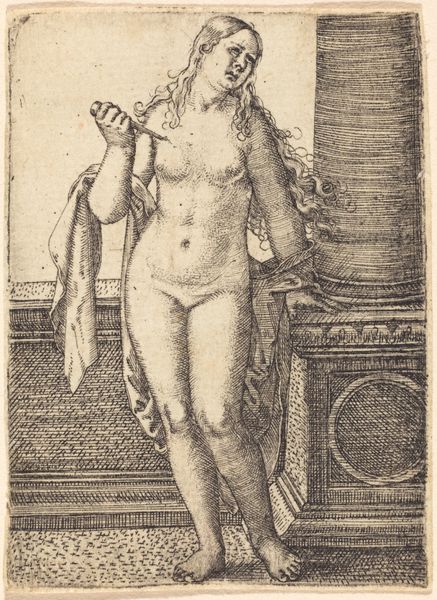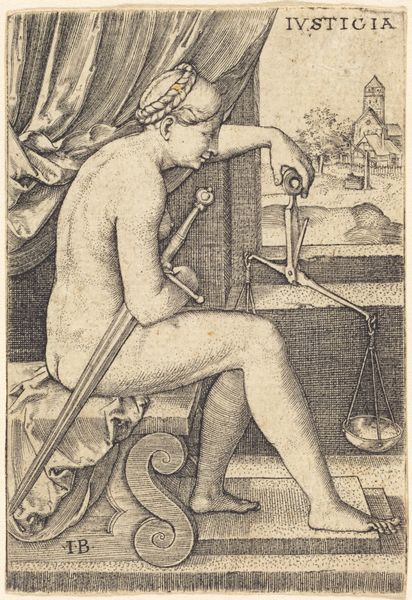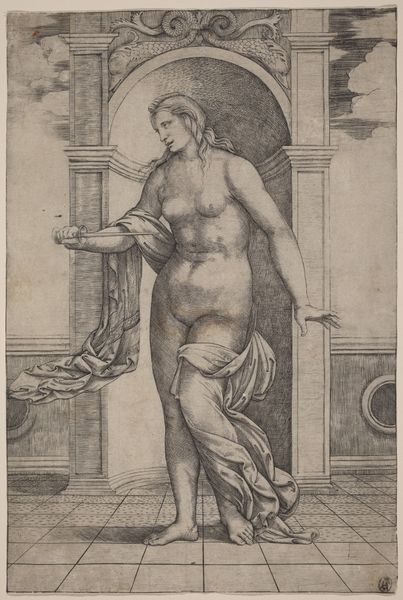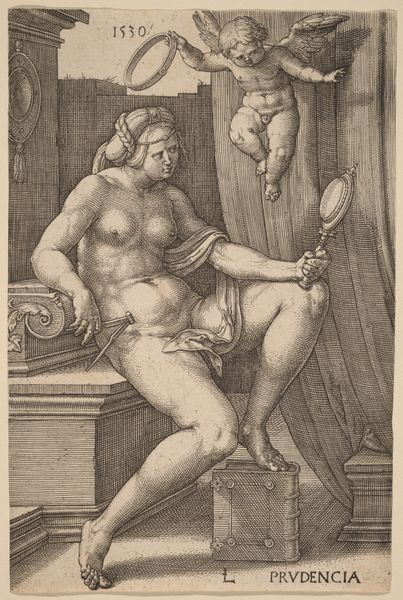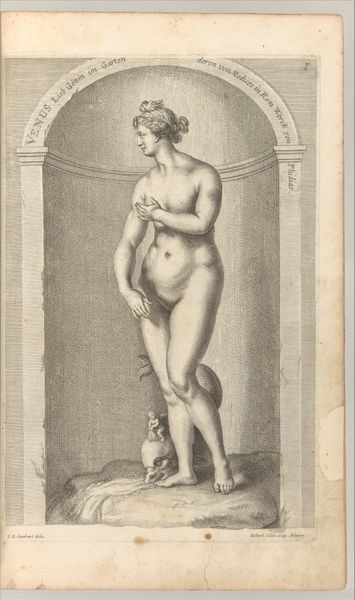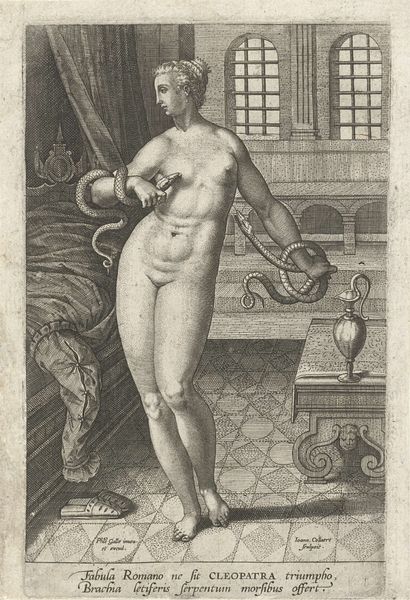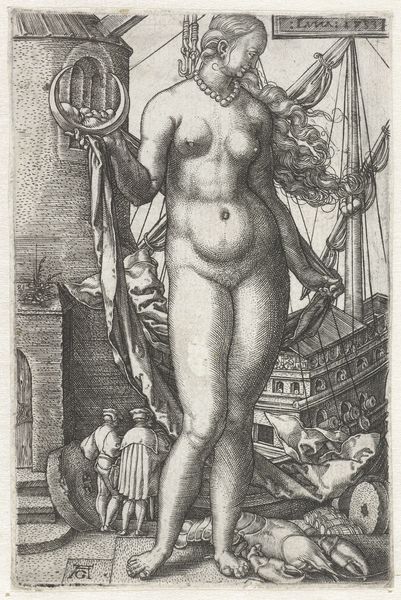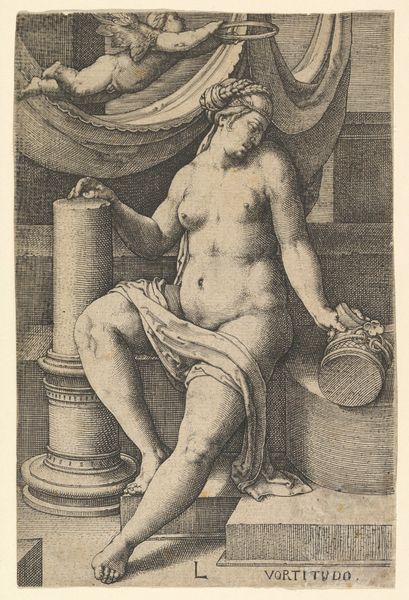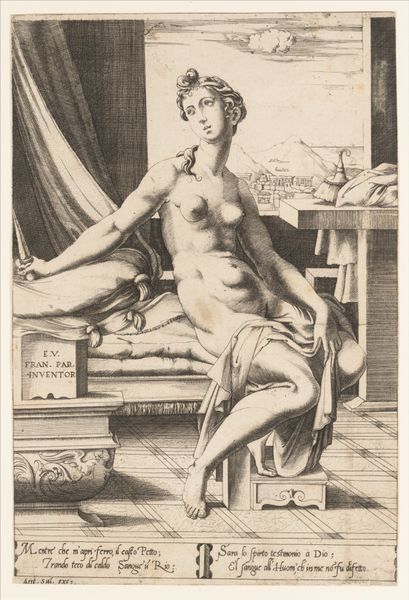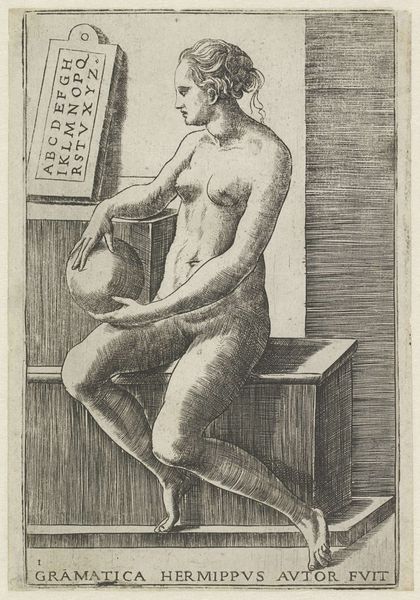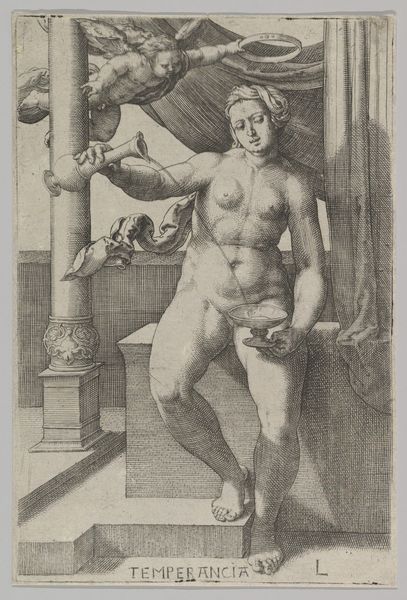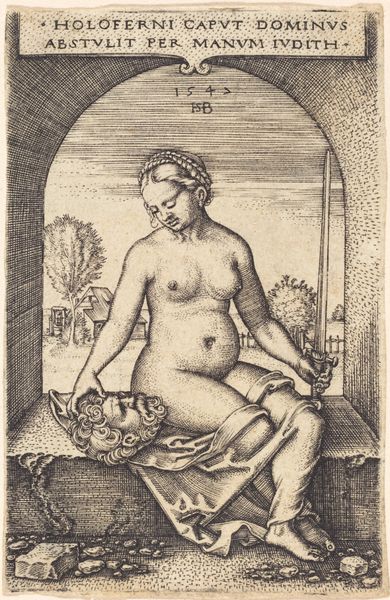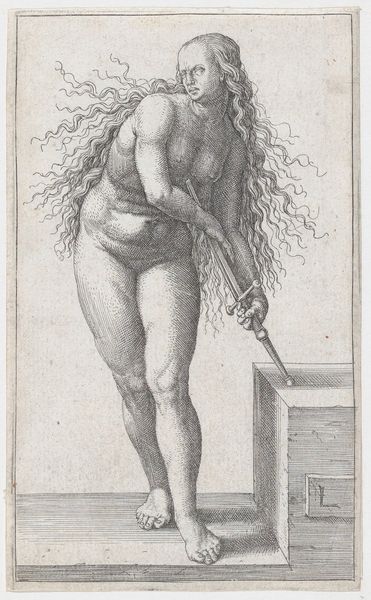
print, engraving
#
allegory
# print
#
figuration
#
line
#
northern-renaissance
#
nude
#
engraving
Copyright: National Gallery of Art: CC0 1.0
Curator: This print, "Justicia (Justice)," comes to us from Lucas van Leyden in 1530. It is an engraving on laid paper. And my first thought is its weight—both the figure and the concept feel dense. Editor: Yes, the figure really dominates. Look at how the lines are dug so deeply into the plate to describe that powerful, weighty form! The labor involved must have been significant, especially given the standardization of the printed image this medium helped bring to prominence. One really has to ask what level of artisanship was involved and at what point this craft became high art? Curator: Well, it's curious you mention labor. The starkness, that rawness of the naked Justice, makes it an almost vulnerable image. A tiny cupid places the wreath of laurels above her head, a symbolic victory of moral virtues perhaps? And beneath the pedestal are fallen law books, possibly signifying an outdated understanding of justice or flawed human law, with "IVSTICIA" clearly engraved. Editor: Good point, Curator! The engraving medium is crucial. Van Leyden's choice to make prints democratized art. This wasn't for a king's collection but could adorn homes and be handled. How might such wide circulation affect common understandings of civic concepts? The scale resting precariously in one hand also indicates perhaps a more subjective rather than objective moral assessment, an indication that interpretations might have been deliberately manipulated. Curator: Exactly! Its small scale facilitates widespread distribution; each print carries this allegorical subject into homes. And yet, it's so intimately rendered—the texture of skin, that furrowed brow, suggesting deliberation, moral tension. I feel its complexity so deeply. The very material choice feels intertwined with its impact. Editor: Precisely. Even centuries later, tracing its own journey as a physical object through varying historical moments adds yet another layer of understanding, one often forgotten when merely approaching the artistic content and symbolism alone.
Comments
No comments
Be the first to comment and join the conversation on the ultimate creative platform.
